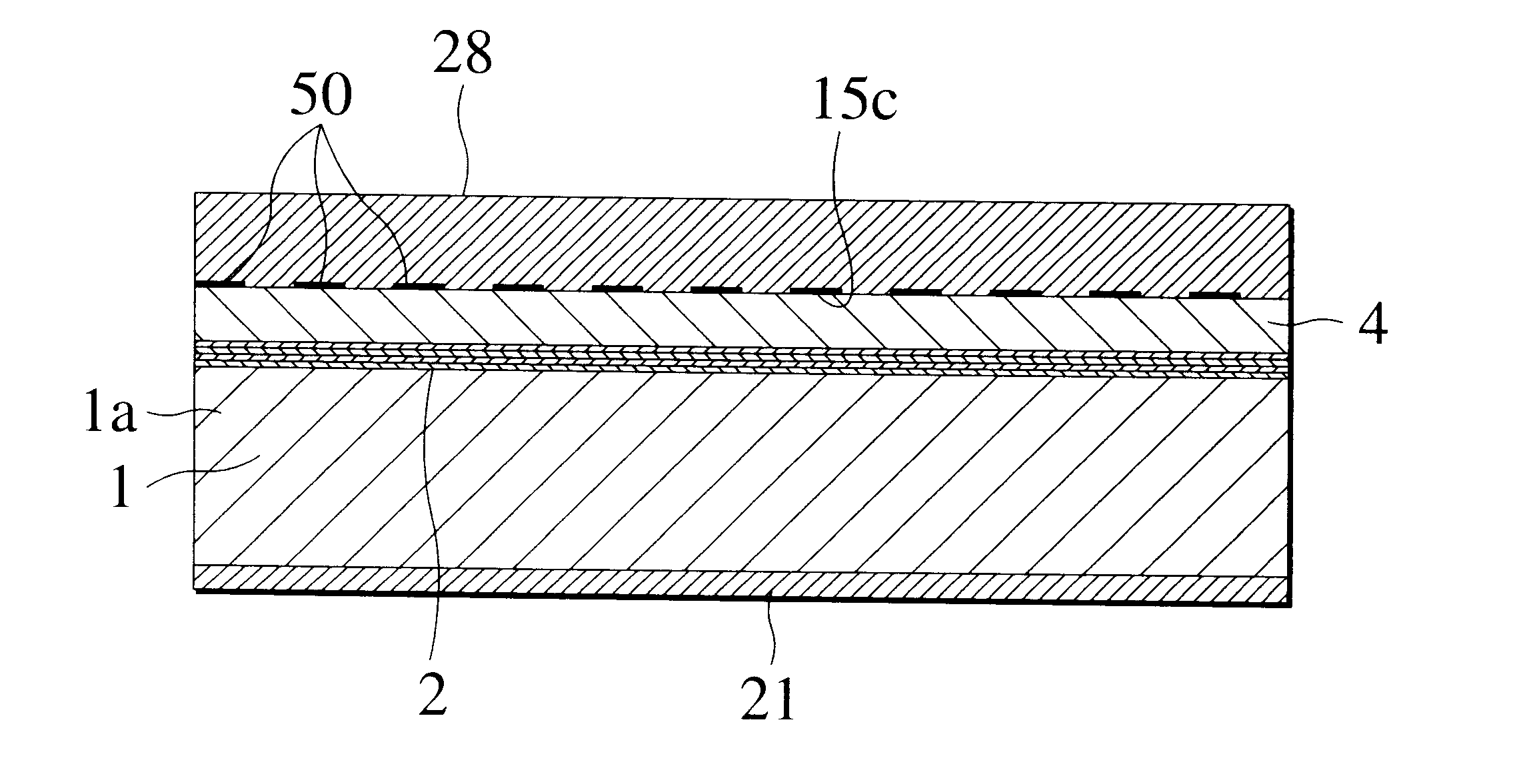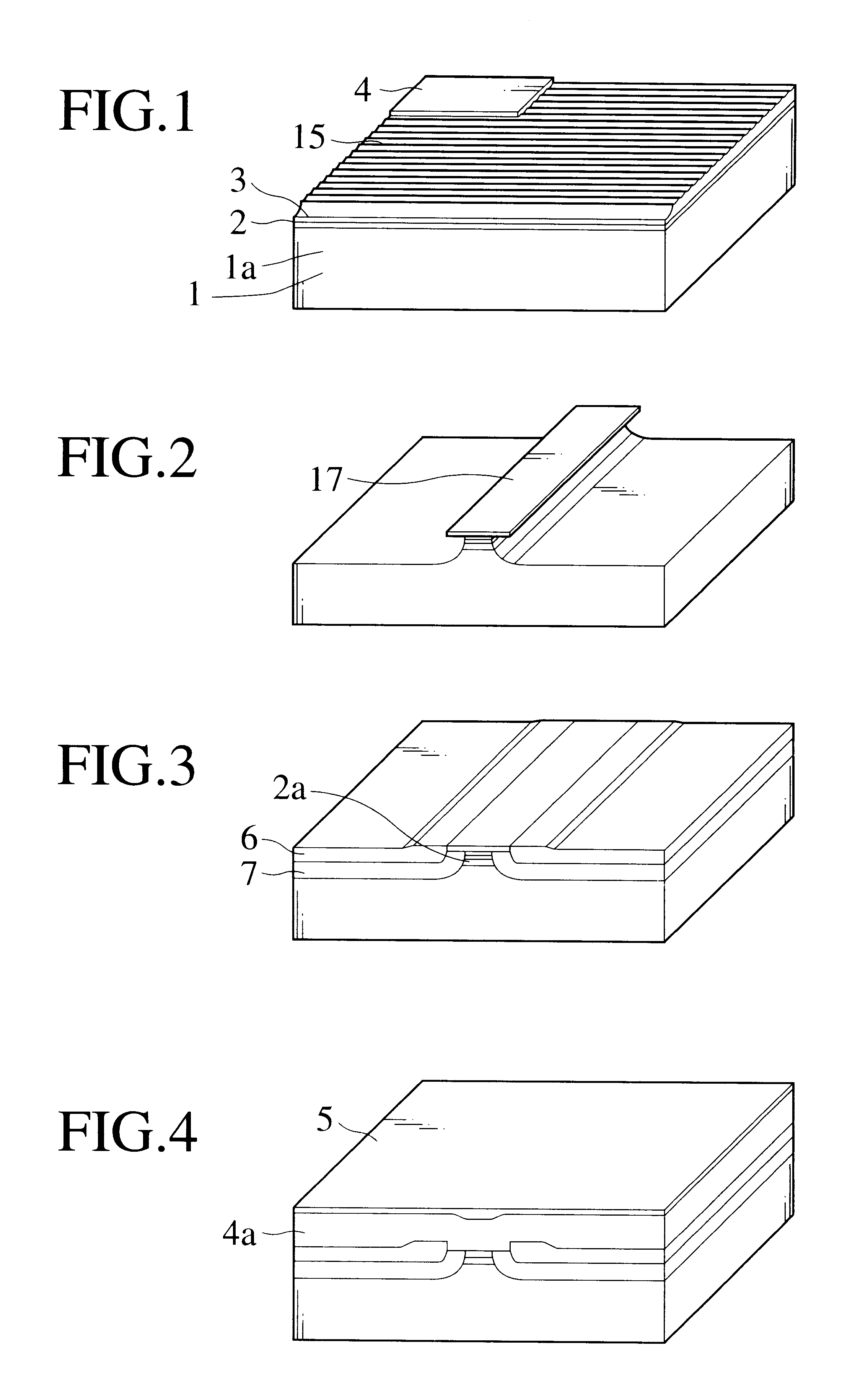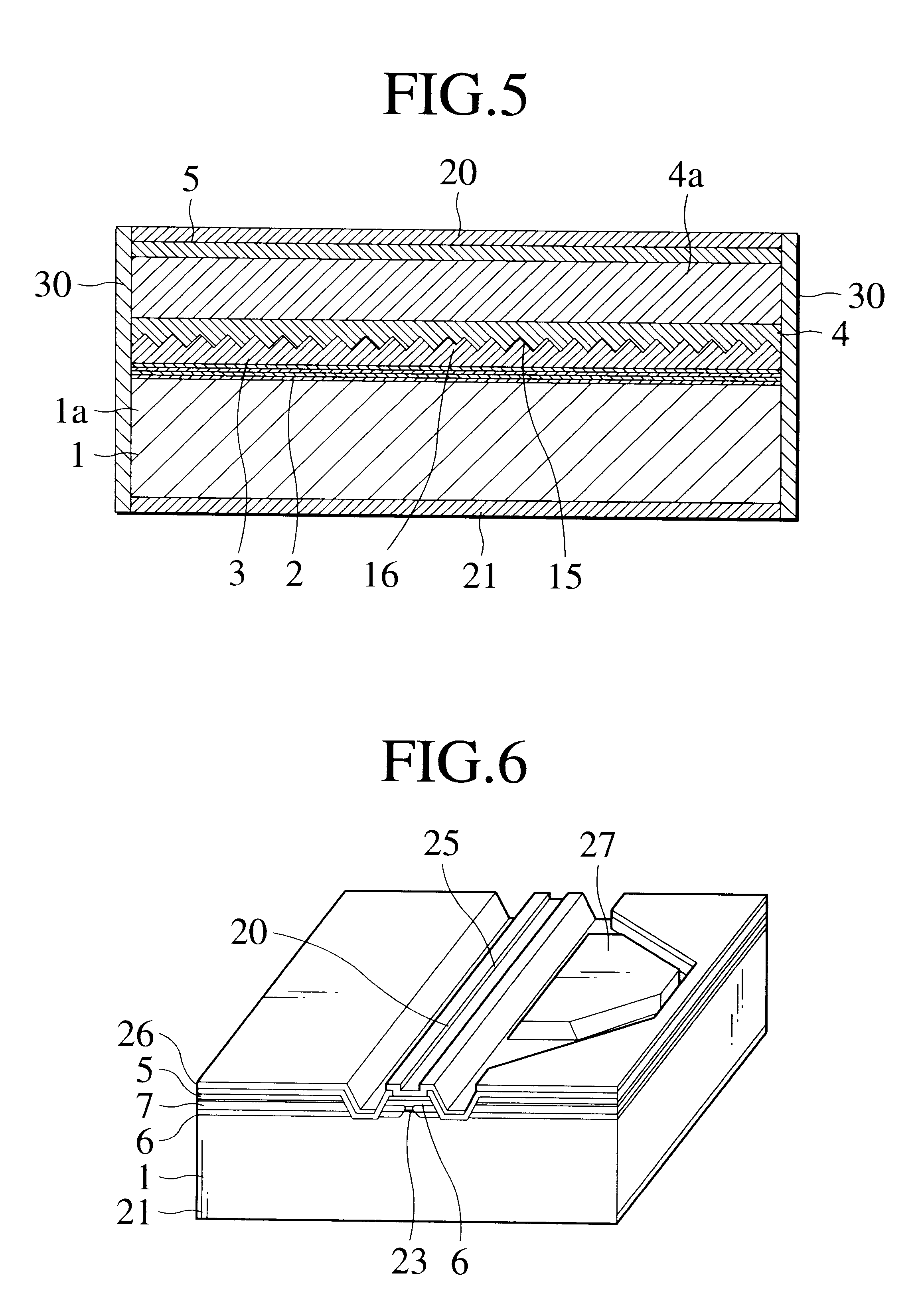Optoelectronic device and laser diode
a technology of optoelectronic devices and laser diodes, which is applied in the direction of instruments, semiconductor lasers, optical elements, etc., can solve the problems of increasing the cost of the device, affecting the performance of the device according to the related art, and reducing the yield of the devi
- Summary
- Abstract
- Description
- Claims
- Application Information
AI Technical Summary
Benefits of technology
Problems solved by technology
Method used
Image
Examples
embodiment 1
FIGS. 7A and 7B are schematic perspective views showing a structure of a laser diode according to a first embodiment of the present invention respectively. To begin with, as shown in FIG. 7A, an n-InP substrate 1 (including an n-InP buffer layer 1a), an MQW active layer 2, a p-InP layer 4, and a p-InGaAsP waveguide layer 3 are grown in sequence. Differences from the related art in FIG. 1 reside in that the p-InP layer 4 of 0.3 .mu.m (preferably 0.05 .mu.m to 0.7 .mu.m, and more preferably 0.1 .mu.m to 0.5 .mu.m) thickness is grown on the MQW active layer 2 to constitute a double-hetero structure and then the waveguide layer 3 of 0.2 .mu.m (preferably 0.02 .mu.m to 0.5 .mu.m, and more preferably 0.05 .mu.m to 0.3 .mu.m) thickness is grown on the p-InP layer 4. The crystal growth must be effected only once at this time.
Then, a diffraction grating 15 is formed thereon. A number of steps are prepared after this step in the related art. But, in this example, as shown in FIG. 7B, only an ...
embodiment 2
The DFB laser is constructed by using the diffraction grating formed on the semiconductor in the first embodiment and the related art, but transparent electrode itself can also be designed to perform a function of the diffraction grating. In this case, since there is no need of forming the diffraction grating on the epitaxially grown semiconductor, manufacture of the device becomes much easier. In particular, if a selective etching process only for transparent electrode material is employed to remove the electrode, manufacturing steps subsequent to the transparent electrode can be tried again without loss of the expensive semiconductor layer structure just in case of troubles. In addition, since, unlike the epitaxial growth, there is no necessity of matching the lattice constant to the semiconductor substrate, margin in design such as control of the refractive index, insertion of an insulating film, etc. can be increased. Further, the device can be free from the masstransport phenom...
embodiment 3
An embodiment in which the present invention is not applied to control of the longitudinal mode in the DFB laser but to control of the transverse mode will be explained hereinbelow.
FIG. 9 is a schematic perspective view showing a structure of a laser diode according to a third embodiment of the present invention. The underlying semiconductor layers are formed in the same way as above embodiments. In other words, the MQW active layer 2, the p-InP layer 4, and the p-InGaAsP contact layer 5 are grown on the n-InP substrate 1 (including the n-InP buffer layer 1a). The ITO layer 28 acting as the transparent electrode is stacked and then patterned like a stripe. The refractive index of the ITO layer 28 is adjusted to 3.0.
Then, the ITO layer 29 (preferably 1.5 .mu.m to 2.0 .mu.m in thickness) which has the refractive index (n=2.5) (preferably 2.5 to 2.8) smaller than the refractive index ITO layer 28 is stacked thereon. Then, the ITO layer 29 is patterned like a stripe to bury the ITO laye...
PUM
 Login to View More
Login to View More Abstract
Description
Claims
Application Information
 Login to View More
Login to View More - R&D
- Intellectual Property
- Life Sciences
- Materials
- Tech Scout
- Unparalleled Data Quality
- Higher Quality Content
- 60% Fewer Hallucinations
Browse by: Latest US Patents, China's latest patents, Technical Efficacy Thesaurus, Application Domain, Technology Topic, Popular Technical Reports.
© 2025 PatSnap. All rights reserved.Legal|Privacy policy|Modern Slavery Act Transparency Statement|Sitemap|About US| Contact US: help@patsnap.com



